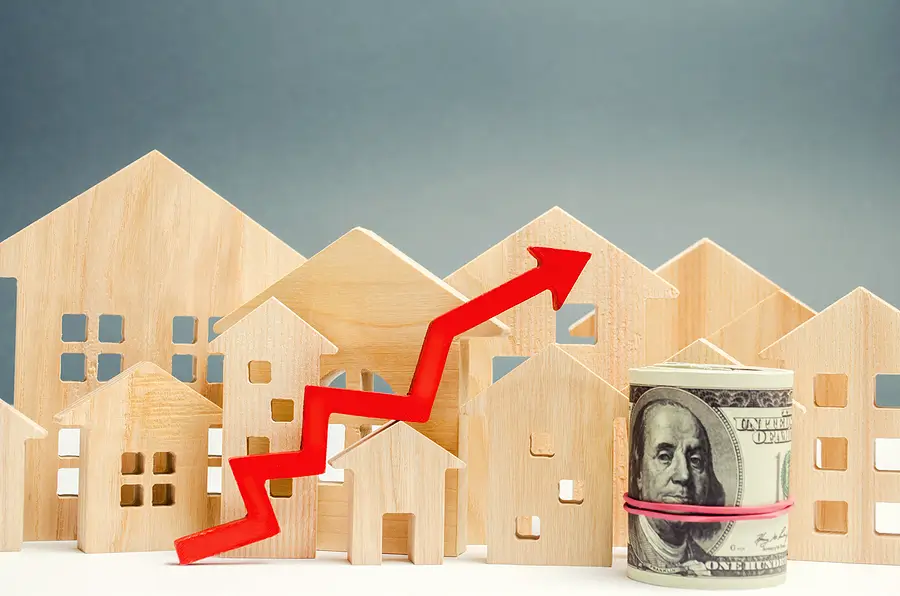If you own rental property in Indiana or are thinking about investing in real estate, chances are you’ve asked yourself one big question: What’s driving rental prices in Indiana?
Understanding what drives rental pricing isn’t just nice to know. It’s essential.It affects your rental income, tenant attraction speed, and monthly cash flow.
Let’s break the myths around pricing your property and talk about setting the right price to stay ahead in Indiana’s market, especially if you want your investment property to stand out from other rental properties.
What’s Fueling Rental Prices in Indiana?
There’s no single answer to this, but several forces are shaping the rental market across the state, from similar properties in your area to the influence of local amenities.
1. Local Market Conditions
When setting the right rental prices in Indiana, the biggest mistake you can make is assuming all of Indiana moves the same way. It doesn’t.
What drives the monthly rent in one area might not apply a few miles down the road. For example, job growth plays a huge role. If new companies are hiring or a big employer just moved in, people follow the work, and demand for rentals increases. That drives prices up. On the flip side, if an area’s losing jobs or the population is shrinking, rents usually flatten out or drop.
Understanding these local shifts helps you set a fair market rent price. It’s not just about what you want to charge — it’s about what your local market can support and the comparable properties in your area.
2. Supply and Demand
Basic economics still rule the rental world, especially when determining rental prices. When more people are looking for places to live than homes available, landlords have the upper hand. Rent goes up fast. But flip that equation, and suddenly, renters get to call the shots. Prices drop, and landlords have to compete harder to fill their properties.
This ebb and flow is constant. It changes with the seasons, the job market, and even how many new rental homes are being built in your area. That’s why savvy investors closely monitor vacancy rates and rental speed to determine the right rent price.
Data matters for smart real estate investing. Whether you're comparing similar properties or tracking your own vacancies, property management software can help keep your pricing competitive.
3. Property-Specific Features
Let’s say your rental is in a solid location — maybe close to downtown or in a neighborhood that’s getting much attention. That’s a great start. But here’s the truth: location alone won’t carry your rental if the property doesn’t measure up.
Tenants today have options that usually come down to the little things that add up.
- Modern touches = higher rent: People will pay more for comfort and convenience. Suppose your rental has newer appliances, an updated kitchen, or even something as simple as an in-unit washer and dryer, which bumps up your perceived property’s value. The more move-in ready your place feels, the more you can reasonably charge.
- Proximity of amenities to your location: Sure, your rental might be in a popular part of town. But is it within walking distance of the train? In a good school district? Those things can help attract tenants who want access to great local amenities. When you can check off more of those boxes, your rental prices in Indiana have more wiggle room.
- First impressions count: Don’t underestimate curb appeal and basic upkeep. Clean paint, trimmed bushes, and working fixtures all signal that you are taking care of your property. And that attracts tenants who take care of where they live. If your place looks well-maintained, it feels more valuable, and renters are willing to pay more for that peace of mind.
4. Rent Control Laws and Indiana Regulations
Unlike some coastal markets, Indiana has no local rent control laws. That gives landlords more flexibility, but it also means you are responsible for staying compliant with landlord-tenant laws.
While you can adjust rent annually based on market conditions, clear communication and lease transparency are critical when implementing rent increases.
A local real estate agent or experienced property manager can help you navigate changes, especially when you're managing multiple properties or scaling up your real estate investing efforts.
5. Expenses That Shape Rental Rates
You can’t set the right rental prices in Indiana without knowing your costs. You're not running a business if your rent doesn’t cover your expenses and leave some room for profit. You're just breaking even or worse, losing money.
Here are the main costs that should factor into your competitive rent price:
- Property taxes — These can vary by location and change over time, so keep an eye on your annual bill.
- Mortgage payments — If you’re financing the property, this is likely your biggest monthly cost.
- Maintenance and repairs — From broken faucets to roof leaks, stuff happens. Budget for both maintenance costs and surprise issues.
- Property management fees — If you're using a professional property manager, which is helpful for many real estate investors, their fees must be part of your equation.
When you run the numbers, your charge for rent should give you enough buffer to cover all costs and maintain healthy monthly cash flow.
Avoid Common Pricing Mistakes with Professional Guidance
Pricing your rental home isn’t just about picking a number — it’s about strategy, research, and understanding the local market. For many Indiana property owners, this part of the job is tricky. That’s why teaming up with a property management expert like PMI Midwest can make a significant difference. We take the guesswork out of pricing, helping you strike that sweet spot between competitive rent and strong rental income.
At PMI Midwest, we don't only collect rent — we’re your all-in-one property management team. With years of experience in Indiana’s real estate market, we help landlords stay ahead with innovative strategies and hands-on support. Here’s what we bring to the table:
- Pinpointing accurate, market-driven rental prices
- Offering rental market analysis
- Creating rental listings that attract the right tenants
- Managing maintenance, rent collection, and lease renewals
- Ensuring full compliance with Indiana landlord-tenant laws
If you’re ready to take the stress out of setting rental prices — and start making the most of your investment — we’re here to help. Get your free rental analysis today and find out what your property should be earning. Let’s unlock the full potential of your rental home, together.
FAQs
How does Indiana's housing affordability gap impact rental prices?
Indiana's housing affordability gap has been widening, with the "housing wage" for a two-bedroom unit rising to $22.07 per hour in 2023, significantly above the state's minimum wage of $7.25. This disparity means that many renters are spending a larger portion of their income on housing, which can influence landlords to adjust rental prices to align with tenants' affordability, potentially affecting overall market trends and rates.
What role do local events play in rental price fluctuations in Indiana?
Major events, such as concerts, sports games, and festivals, can lead to temporary spikes in rental demand and prices. For instance, Indianapolis experienced a surge in short-term rental bookings during events like Taylor Swift's concerts and the NBA All-Star game, with other rental properties earning over $10,000 during these periods. These events can create short-term imbalances in supply and demand, influencing rental rates.
How does the availability of rental inventory affect rental prices in Indiana?
A decrease in available rental properties can lead to increased competition among renters, driving up prices. In Indianapolis, the number of available rental units has been declining, creating a more competitive local rental market and contributing to rising average rents. Limited inventory often results in landlords adjusting prices upward due to higher demand and fewer tenant options.
Related Articles
What Are the Benefits of Rental Valuation?
What Are the Major Factors that Affect Your Rental Property Vacancy Rate?



